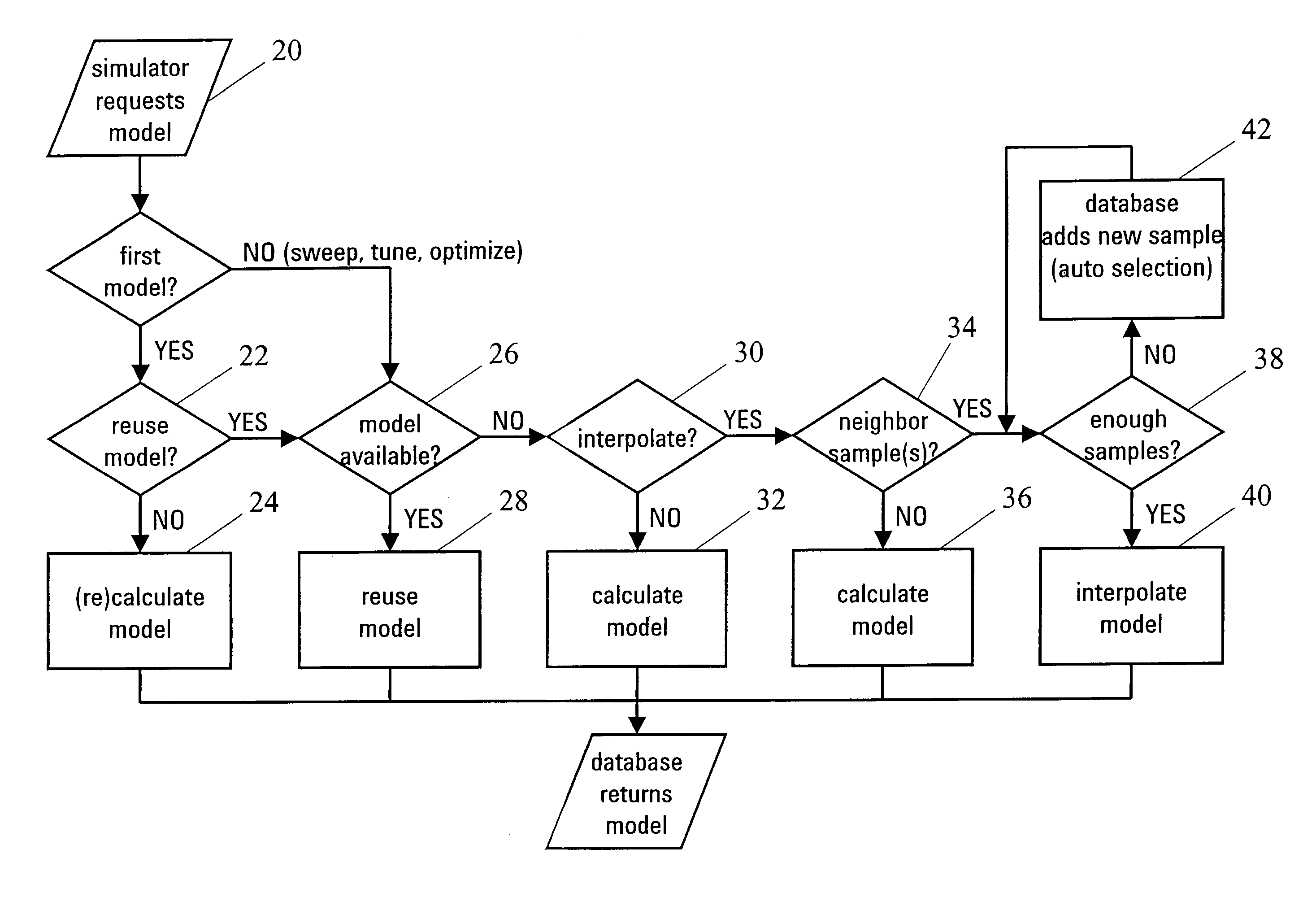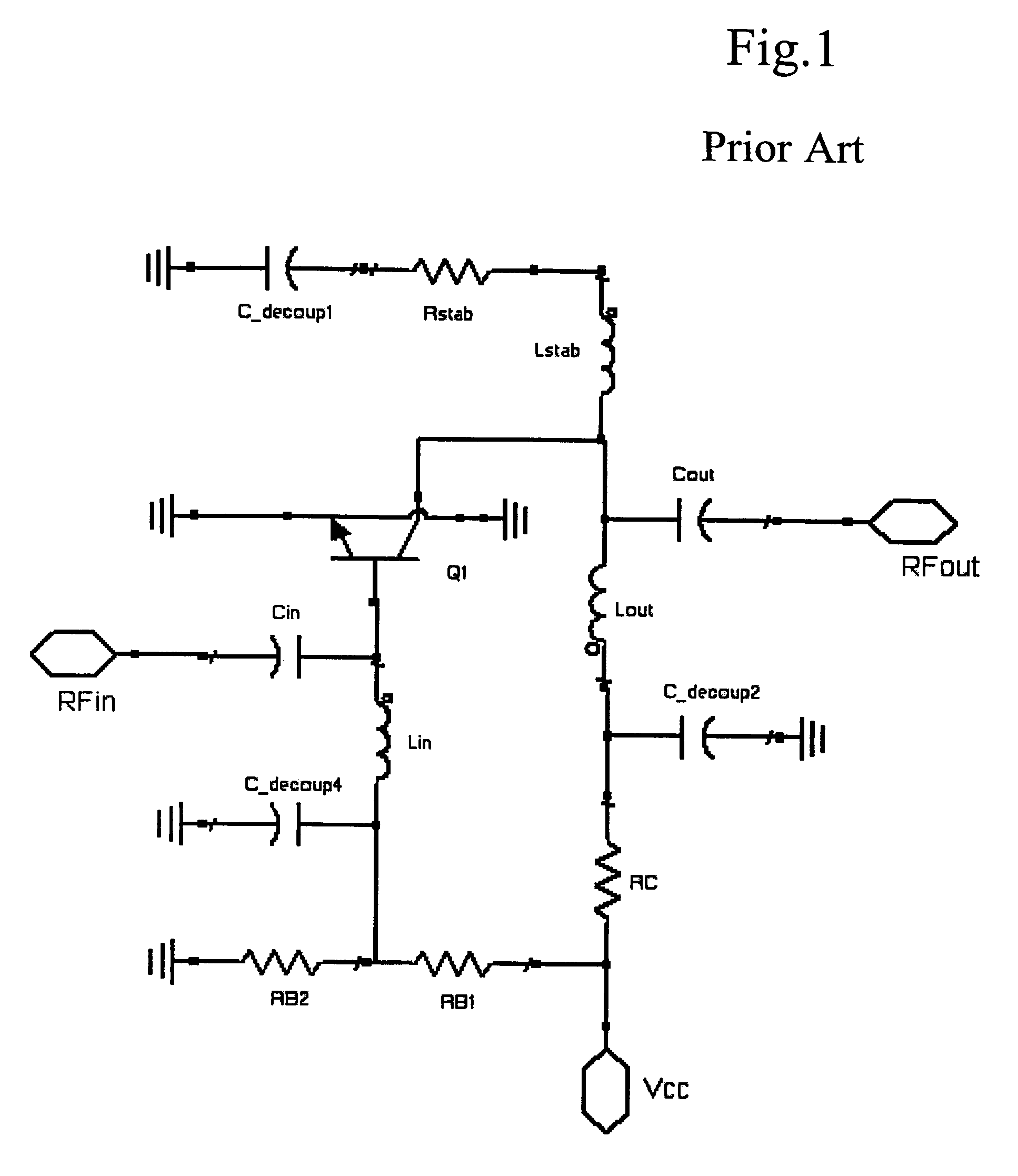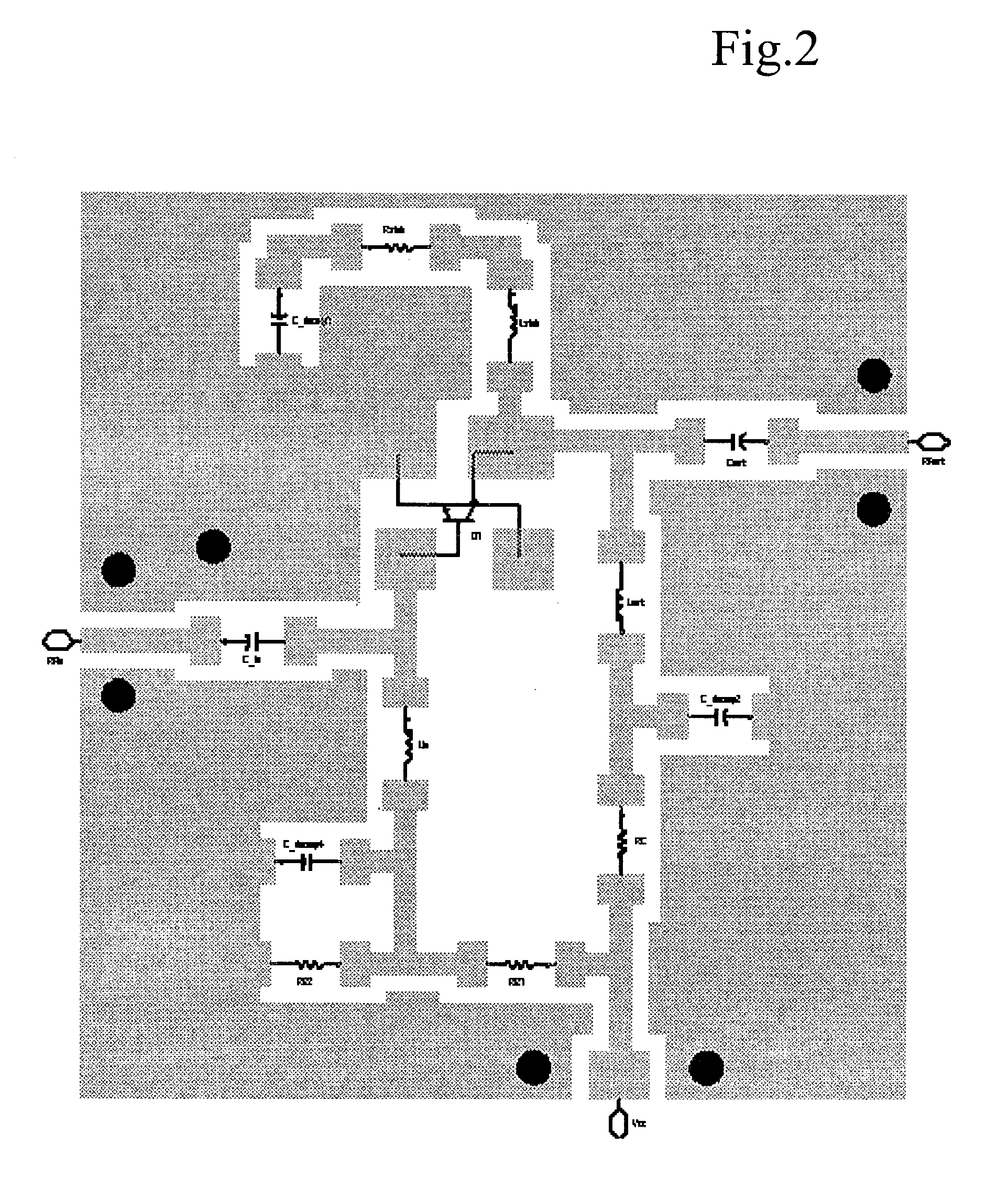Electromagnetic/circuit co-simulation and co-optimization with parametric layout components
a technology of layout components and circuits, applied in error detection/correction, program control, instruments, etc., can solve problems such as design approaches in common use that do not perform parasitic analysis and physical verification, design flow bottlenecks, and redesign of original circuits, so as to facilitate more extensive use of em simulation and control the amount of cpu processing time
- Summary
- Abstract
- Description
- Claims
- Application Information
AI Technical Summary
Benefits of technology
Problems solved by technology
Method used
Image
Examples
Embodiment Construction
[0031]The invention provides a new concept of “parametric layout components” with an associated EM model database. Parametric layout components allow high-frequency circuit designers to incorporate physical design parasitics at the schematic design level. Once generated, the parametric layout components are available from a components library and are usable together with schematic components for concurrent EM / circuit co-simulation and co-optimization. With parametric layout components, high-frequency designers can start physical design analysis alongside analysis of the circuit's electrical performance, in the same schematic window. In other words, by including layout effects at the same time as electrical performance, designers can include real-world effects as they develop their circuits. This new concept goes beyond incremental design flow improvements, and introduces a new paradigm for tackling real-world physical design challenges.
[0032]Each parametric layout component has an a...
PUM
 Login to View More
Login to View More Abstract
Description
Claims
Application Information
 Login to View More
Login to View More - R&D
- Intellectual Property
- Life Sciences
- Materials
- Tech Scout
- Unparalleled Data Quality
- Higher Quality Content
- 60% Fewer Hallucinations
Browse by: Latest US Patents, China's latest patents, Technical Efficacy Thesaurus, Application Domain, Technology Topic, Popular Technical Reports.
© 2025 PatSnap. All rights reserved.Legal|Privacy policy|Modern Slavery Act Transparency Statement|Sitemap|About US| Contact US: help@patsnap.com



